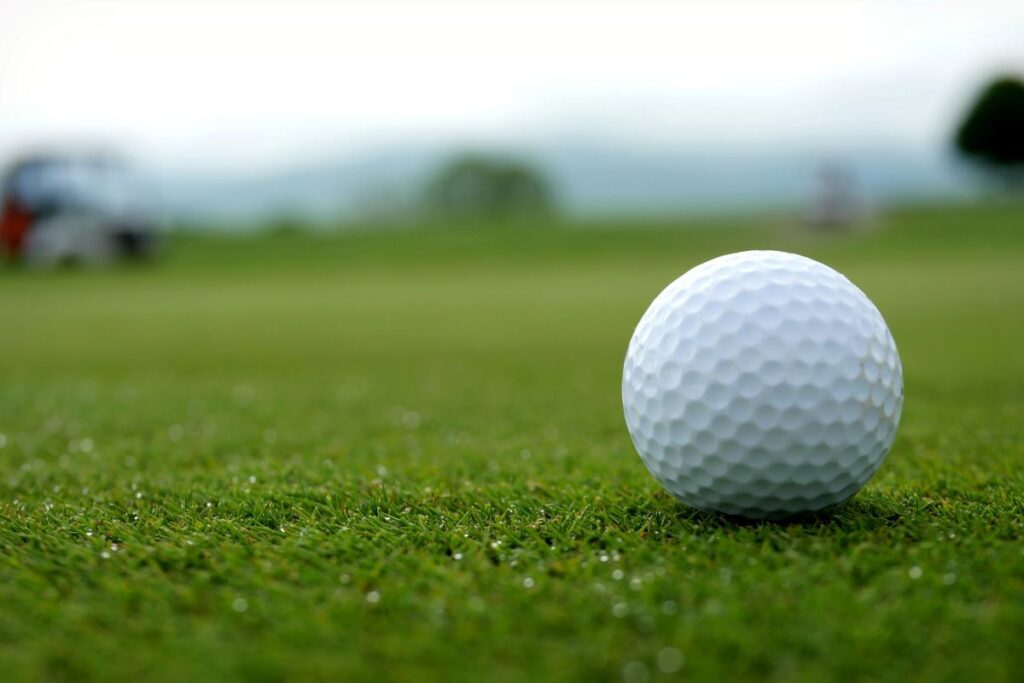Tennis balls and golf balls are both spheres used in popular racket/club sports, but they differ substantially in their materials, size, weight, bounce, spin potential, speed, cost, and overall construction.
Here are 11 ways tennis balls and golf balls diverge:
- Weight – Tennis balls 57-59g, golf balls 45-46g.
- Size – Tennis balls 6.5-6.7cm diameter, golf balls 4.2-4.3cm.
- Materials – Tennis uses rubber/felt, golf balls have solid rubber cores with plastic covers.
- Bounce – Tennis balls bounce higher with more deformation, golf balls have a lower bounce.
- Spin – Tennis balls take more spin from racket friction, golf balls have aerodynamic dimples.
- History – Tennis balls from 16th century, golf balls from 15th century Featherie origins.
- Speed – Tennis serves hit 160+ mph, golf balls reach 205+ mph clubhead speed.
- Records – Fastest tennis serve 163.4mph, golf drive record is 249 mph.
- Brands – Wilson, Penn big in tennis; Titleist, Callaway lead golf balls.
- Durability – Tennis balls quickly lose pressure, golf balls very durable unless cut.
- Cost – Pack of 3 tennis balls is $5, golf balls $20-$50+ per dozen.
Below I’ll explore the performance differences between these two spherical ball sports in depth!

Difference in Weight
Golf balls tip the scales around 45-46 grams on average. Tennis balls are substantially lighter at 57-59 grams.
The golf ball’s weight balance between momentum and launch angle off the clubface. The tennis ball’s feathery weight adds speed potential.
I was surprised feeling how solid and heavy a golf ball felt initially coming from tennis!
Difference in Size
Standard golf balls have a diameter of 42.67 mm. Tennis balls are noticeably larger at 65-67 mm across.
Golf’s compact size helps launch efficiency off the clubface. Tennis balls generate great pace despite their larger footprint.
Difference in Materials
Modern golf balls feature a solid rubber or plastic core surrounded by a rigid thermoplastic outer shell with aerodynamic dimple patterns.
So golf ball materials favor durability and flight performance, while tennis balls focus on a grippable felt coat.
Difference in Bounce
Tennis balls have a high, lively bounce thanks to their elastic core and felt coat grabbing then deforming on impact.
Golf balls have a lower bounce of only 50-60% on concrete. Their rigid shell doesn’t compress as much.
So tennis balls spring faster off the court, while golf balls retain energy to maximize distance.
Difference in Spin Potential
The fuzzy felt of a tennis ball grips the racket strings to impart heavy topspin or slice spins.
Golf balls use aerodynamic dimple patterns rather than surface friction to produce spin characteristics influenced by swing plane and clubface angles.
History of Both Ball Types
Tennis balls evolved from wood and leather to rubber cores with fuzzy felt over many centuries.
Golf balls originated as wooden spheres in the 15th century. The Featherie ball emerged in the 1600s before the rubber Haskell ball in the 1900s.
So both trace origins back centuries as equipment advanced.
Speed They Travel
A well-struck tennis serve can blast 140+ mph off the racket thanks to its light fluffy design.
Top golf drives reach over 205 mph in clubhead speed at impact, aided by the club length and solidity.
So golf balls have a speed advantage for pure force transfer, but tennis serves still impress!
World Speed Records
- Fastest tennis serve: 163.4 mph by John Isner
- Fastest golf drive: 249 mph clubhead speed by Ryan Winther
Golf clubhead speed more than outpaces racket tennis serves.
Brands and Manufacturers
Wilson, Penn, Dunlop lead tennis ball production.
Titleist, Callaway, TaylorMade, Bridgestone dominate golf ball manufacturing.
Both sports benefit from technical product advancements.
Storage and Maintenance
Tennis balls lose pressure and bounce over time. Storing in pressurized cans extends life.
Golf balls are extremely durable if not cut or damaged. Simple temperature-controlled storage works.
So golf balls hold quality longer under normal conditions.
Cost Considerations
A can of 3 new tennis balls costs around $5. Even “used” practice balls run under $10 per container.
Premium golf balls cost $30-$50+ per dozen at retail. Individual balls can run $2-$5 apiece.
So golf’s durability comes at a higher purchase price point.
In summary, while superficially similar spheres, tennis and golf balls differ substantially in their specialized designs, materials, and performance that tailor them uniquely for each sport’s specific mechanics and demands. Understanding these nuances provides appreciation for the impressive engineering inside!
